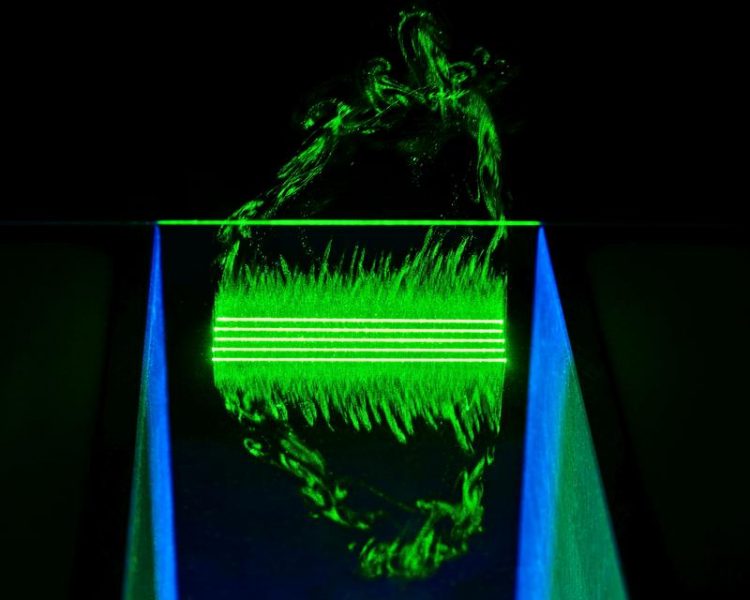High Resolution Laser Structuring of Thin Films at LOPEC 2017

Laser ablation of ITO on flexible PET substrate. Fraunhofer ILT, Aachen, Germany
The requirements for competitive process engineering for producing organic electronics are high: structure sizes below 10 µm, high speeds with ablation rates of several mm2/min and applicability to several m2. Researchers from Fraunhofer ILT investigate laser based processes for flexible micro structuring of thin films.
Through the laser complex structures can be fabricated at high surface rates. Customized wavelengths and pulse durations enable the use of specific optical characteristics of organic and inorganic materials.
Even at high speeds the laser precisely structures thin films with the developed processes. Compared to conventional processes various approaches to beam guiding and shaping improve resolution and productivity significantly.
Our experts are looking forward to give you more details about this topic at LOPEC 2017.
Contact
Dipl.-Ing. Christian Hördemann
Group Micro and Nano Structuring
Phone +49 241 8906-8013
christian.hoerdemann@ilt.fraunhofer.de
Ludwig Pongratz M.Sc.
Group Micro and Nano Structuring
Phone +49 241 8906-8044
ludwig.pongratz@ilt.fraunhofer.de
Media Contact
All latest news from the category: Trade Fair News
Newest articles

Properties of new materials for microchips
… can now be measured well. Reseachers of Delft University of Technology demonstrated measuring performance properties of ultrathin silicon membranes. Making ever smaller and more powerful chips requires new ultrathin…

Floating solar’s potential
… to support sustainable development by addressing climate, water, and energy goals holistically. A new study published this week in Nature Energy raises the potential for floating solar photovoltaics (FPV)…

Skyrmions move at record speeds
… a step towards the computing of the future. An international research team led by scientists from the CNRS1 has discovered that the magnetic nanobubbles2 known as skyrmions can be…





















